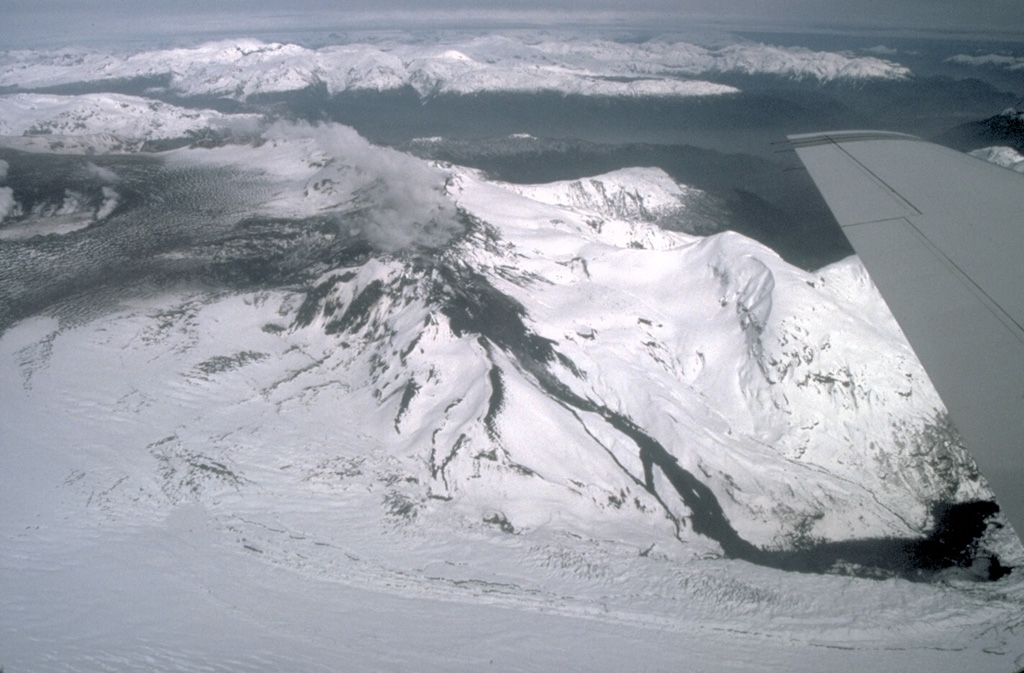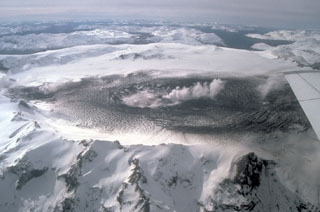Global Volcanism Program | Image GVP-04931

The dark streak descending the NW flank of the caldera of Hudson volcano is a lava flow that was erupted during the initial stages of the 1991 eruption. During the first two days of the eruption, August 8-9, basaltic ash and lava were erupted from a 4.5-km-long fissure on the western caldera rim. The lava flow traveled 4 km down the Huemules glacier. Ash from the August 12-15 paroxysmal eruption, which originated from a subglacial vent whose margin is just visible at the extreme left, darkens the caldera floor in this August 23 photo.
Photo by Norm Banks, 1991 (U.S. Geological Survey).
![]() This image is made available as a Public Domain Work, but proper attribution is appreciated.
This image is made available as a Public Domain Work, but proper attribution is appreciated.

Cerro Hudson
